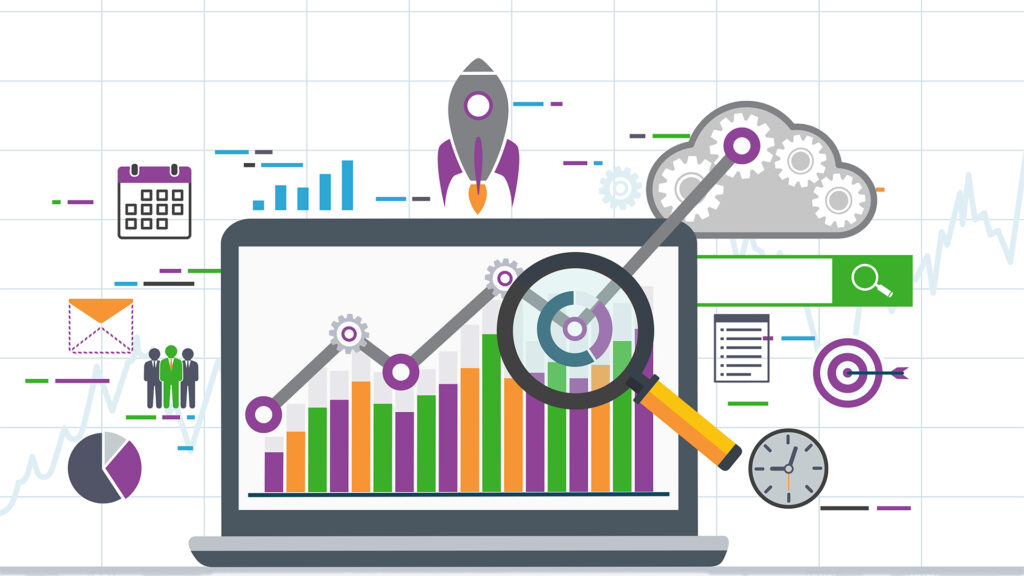One major trend in business intelligence and data management is one that’s dedicated to forecasting future trends so organizations can take profitable advantage of them. Companies are heavily investing in a method known as predictive analytics, so much so that the predictive analytics market is expected to grow its $10 million benchmark in 2020 to $30 million by 2026.1
Why is this such an increasingly popular service market across practically all industry segments? A primary factor is the ability of predictive analytics to secure business growth potential through fact-based strategic development and deployment.
What is predictive analytics?
Predictive analytics is a specific branch of data analytics that employs technologies such as artificial intelligence, machine learning, data mining, statistical modeling, and others to make—as the name implies—predictions about market-related futures. It integrates gathered data and evolving algorithms to create a realistic assessment of upcoming outcomes, such as industry shifts or customer demands.
The massive amount of data available to companies today is a significant driver for predictive analytics, as organizations seek to extract the most value from their growing networks and storage databases. Data scientists can engage deep learning and machine learning algorithms to detect patterns and look ahead to likely events. The company can then make more informed decisions while mitigating risk and adjusting strategy based on gathered insights.
What’s enabling predictive analytics?
Predictive analytics is not a wholly new approach to data. Still, the technologies developed and refined in the past few years have allowed organizations to take more immediate advantage of them. Several factors have combined to accelerate predictive analytics adoption, including:
- Growing data volume and accessibility
- Proliferation of rapid, high-volume data processing technology
- Competitive pressure driving digital transformation initiatives
This has shifted predictive analytics out of the realm of theoretical statisticians and made it a tool that business analysts and IT experts can employ for the benefit of their organization.
Use cases for predictive analytics
So how are organizations implementing predictive analytics for their benefit? Gretchen Brainard, offering portfolio leader for government and public services customer and marketing at Deloitte, had this to say about the state of predictive analytics usage in 2022:
“Factors such as the priorities of the current administration and the impacts of the pandemic on the way we live, work and access services will contribute to the ways federal agencies leverage AI technology…predictive analytics can help identify risk factors for housing and food insecurity, addiction and mental health needs, allowing federal agencies and legislators to adopt a data-driven approach to not only providing relief and access to resources but also implementing policies aimed at prevention and intervention.”2
Within other industry spheres, organizations are turning to predictive analytics to help with:
- Fraud detection – By combining analytics approaches, organizations can more rapidly detect digital criminal activities even before they begin an attack. With cybersecurity being an enormous concern across all industries, predictive behavioral analytics can monitor network activity to detect fraud, zero-day vulnerabilities and advanced threats.
- Marketing optimization – Predictive analytics can be used to anticipate customer responses or purchase patterns, which can help more efficiently target prime audiences while creating more cross-sell opportunities. Through this, organizations can attract and retain a higher-revenue customer base.
- Operational streamlining – Other organizations use predictive analytics to manage inventory and supply chain logistics. For instance, airline and transportation companies can process data on ticket sales and pricing. Hotels might anticipate vacancies to promote empty rooms and maximize occupancy on a given night.
- Risk reduction – Banking companies might use predictive analytics to assess a customer’s purchase patterns and credit payments, determining whether they’re a high-risk investment for a loan. Other data could be used to handle stock investments based on market performance, detect insurance claim fraud, and anticipate fluctuations in real estate pricing and housing construction supply chains.
As with most things, the first step to addressing an organization’s need is to identify it upfront. In the case of predictive analytics, organizations must determine what predictions they think they need to make so they can collect the right datasets and algorithms to reach the desirable outcome.
- Mordor Intelligence, “Predictive and Prescriptive Analytics Market,” 2021
- FedTech, “2022 Tech Trends: Predictive Analytics and AI Will Make Agencies More Efficient,” Dec. 2021
